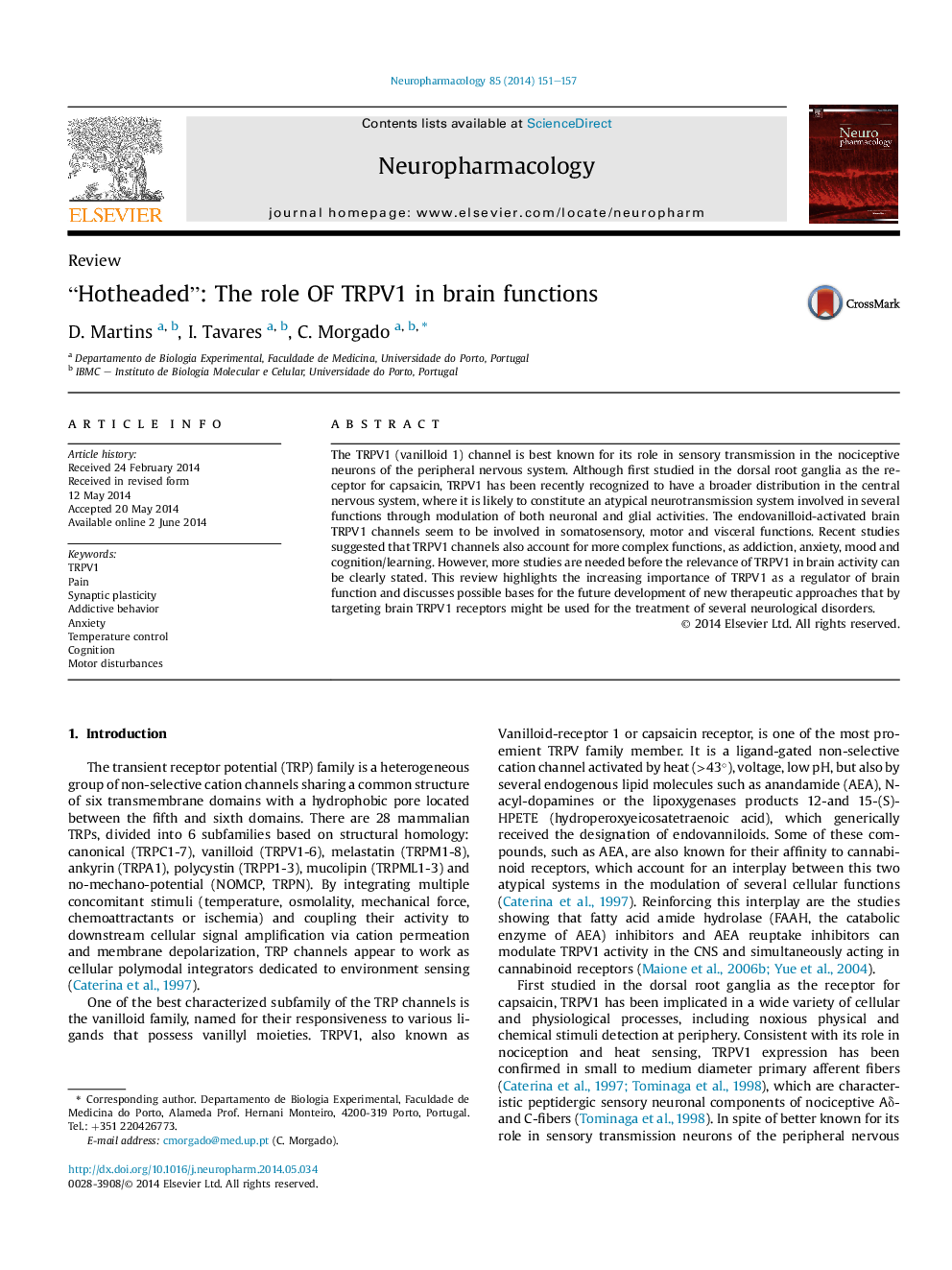| Article ID | Journal | Published Year | Pages | File Type |
|---|---|---|---|---|
| 5814378 | Neuropharmacology | 2014 | 7 Pages |
â¢TRPV1 expression was demonstrated in areas of the central nervous system.â¢TRPV1 was shown to modulate both neuronal and glia activities.â¢In the CNS, TRPV1 seems to be involved in synaptic plasticity.â¢TRPV1 is an important player in descending pain modulation.â¢Pharmacological manipulation of brain TRPV1 seems promising in several neurological disorders.
The TRPV1 (vanilloid 1) channel is best known for its role in sensory transmission in the nociceptive neurons of the peripheral nervous system. Although first studied in the dorsal root ganglia as the receptor for capsaicin, TRPV1 has been recently recognized to have a broader distribution in the central nervous system, where it is likely to constitute an atypical neurotransmission system involved in several functions through modulation of both neuronal and glial activities. The endovanilloid-activated brain TRPV1 channels seem to be involved in somatosensory, motor and visceral functions. Recent studies suggested that TRPV1 channels also account for more complex functions, as addiction, anxiety, mood and cognition/learning. However, more studies are needed before the relevance of TRPV1 in brain activity can be clearly stated. This review highlights the increasing importance of TRPV1 as a regulator of brain function and discusses possible bases for the future development of new therapeutic approaches that by targeting brain TRPV1 receptors might be used for the treatment of several neurological disorders.
